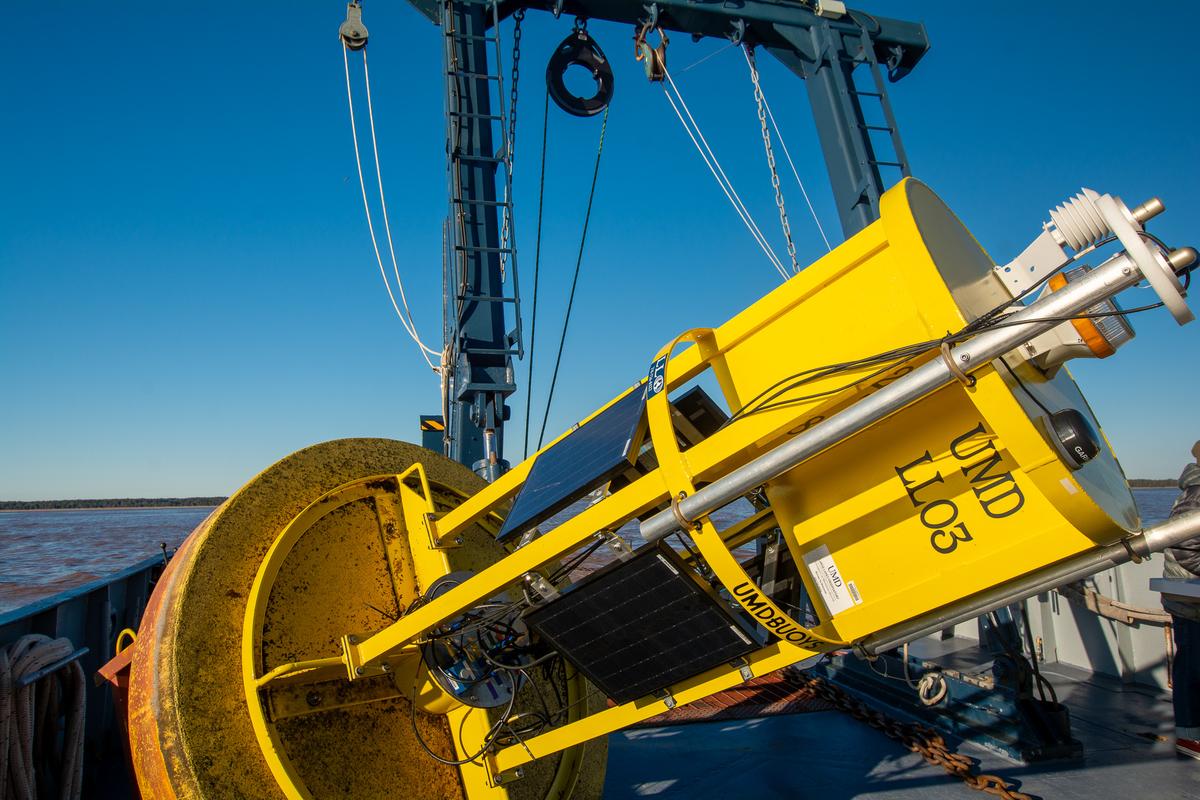
May 10, 2024. A meteorological buoy sits on the deck of the R/V Blue Heron waiting for deployment in Western Lake Superior. Image credit: Cait Dettmann/MNSG
Meteorological buoys, or weather buoys, are heavily instrumented floating devices that collect a wide spectrum of data about the weather and water they are floating on. This project will deploy buoys along the south shore of Lake Superior that will collect data including wind speed, air temperature, wave height, water temperature, and biogeochemical parameters such as chlorophyll fluorescence, among others.
Data from the buoys will be collected in almost real-time and distributed to national data centers such as the Great Lakes Observing System and the National Data Buoy Center. The 2024-2026 period of data collection will build upon 11 years of data collected by similar buoys in Lake Superior.
The information collected from this project will be used to better understand long-term trends, such as those that might be associated with climate change. The real-time data of Lake Superior can also be used for weather forecasting, marine safety, commercial fishing charters, North Shore swimmers, or people curious about Lake Superior.
Funding
Support for this project is provided by Minnesota Sea Grant’s 2024-2026 Biennial Request for Proposal program. Every two years MNSG awards approximately $2 million in research grants through a rigorous, competitive, peer-reviewed process. Researchers based in Minnesota, who are not federal employees, are invited to apply. Grant awards average about $45,000 per year for two years, plus a graduate research associate whose cost does not count against the project budget.
Project team
Principal Investigator:
Jay Austin
jaustin@d.umn.edu
Professor, Large Lakes Observatory and Department of
Physics and Astronomy
University of Minnesota Duluth
Co-Principal Investigator:
Jessica Rogers
jherring@d.umn.edu
Planetarium Director and Astronomy Instructor, Department of Physics and Astronomy
University of Minnesota Duluth
Why Sea Grant?
This project supports two of Minnesota Sea Grant's focus areas: Resilient Communities and Economies and Environmental Literacy and Workforce Development.
Not only will this project assist in monitoring of nearshore physical conditions on the south shore of Lake Superior, but will provide lesson plans for high schoolers and disseminate information publicly through workshops.
Lead scientist(s)
Jay Austin
jaustin@d.umn.edu
Professor, Large Lakes Observatory and Department of
Physics and Astronomy
University of Minnesota Duluth